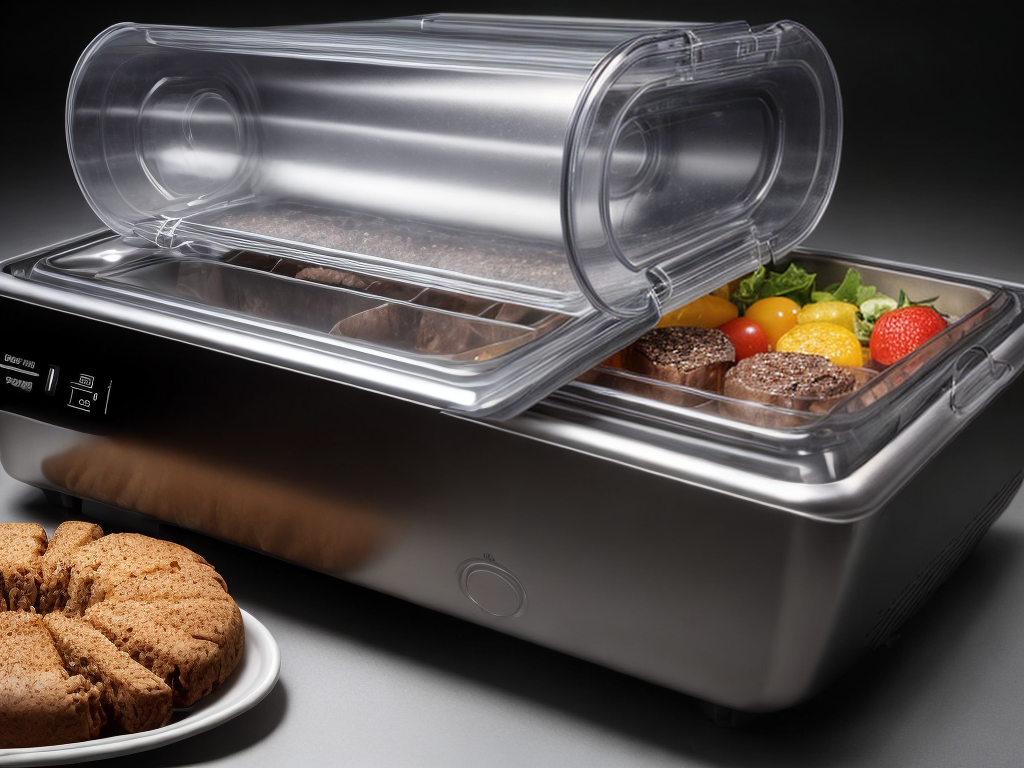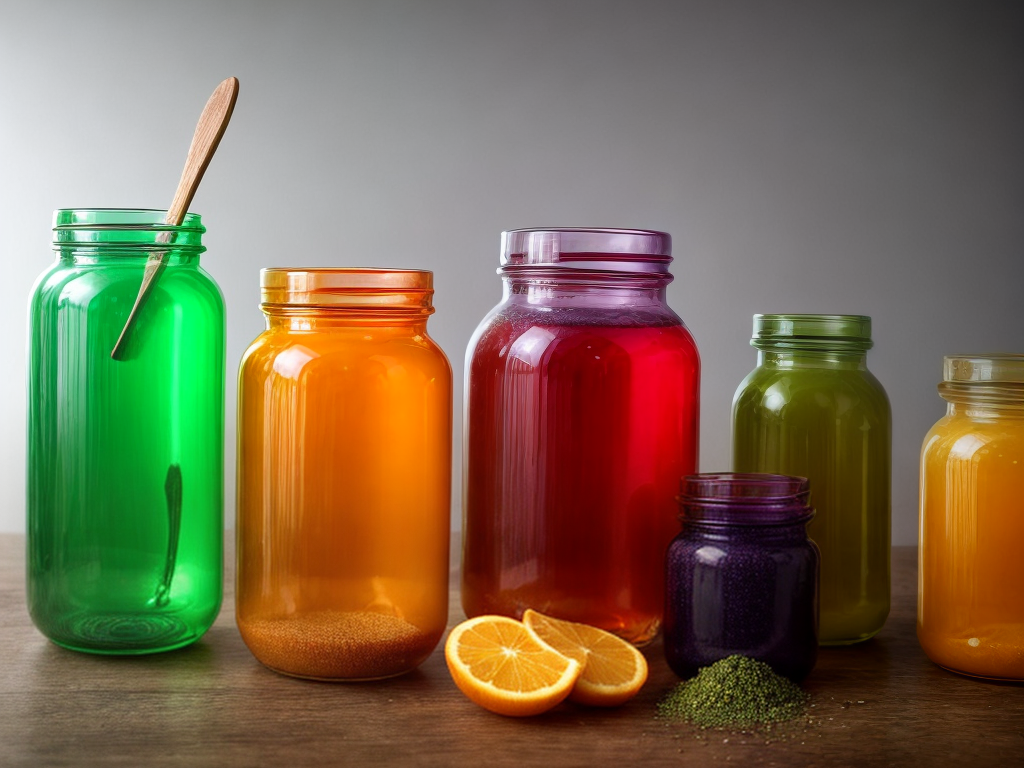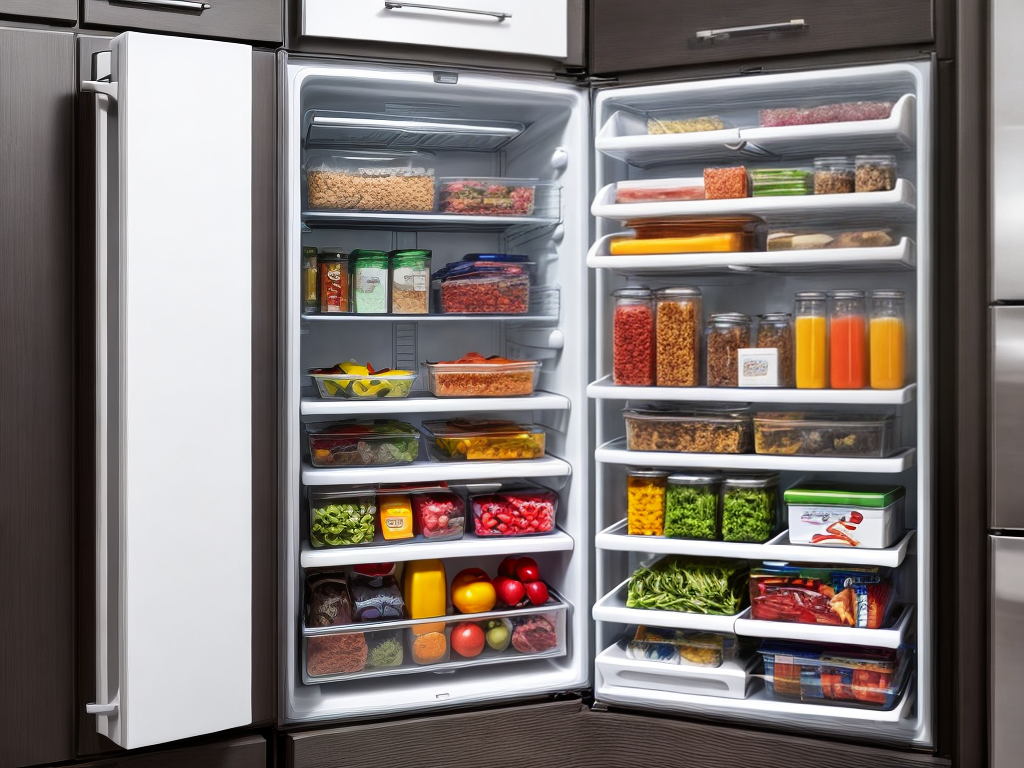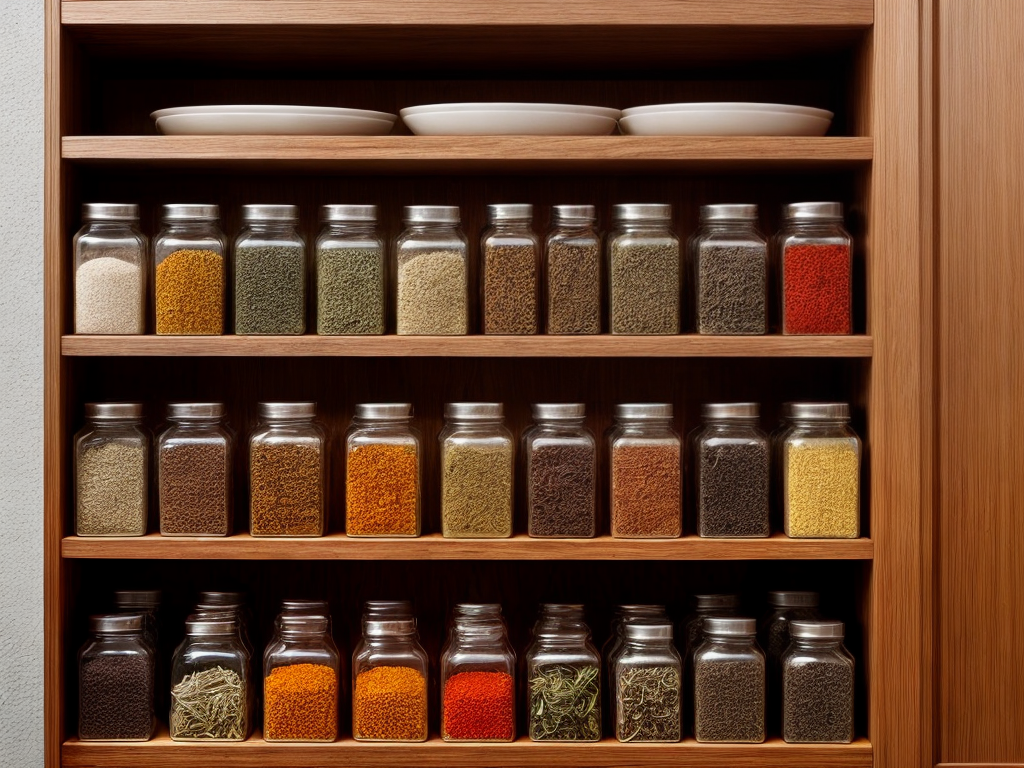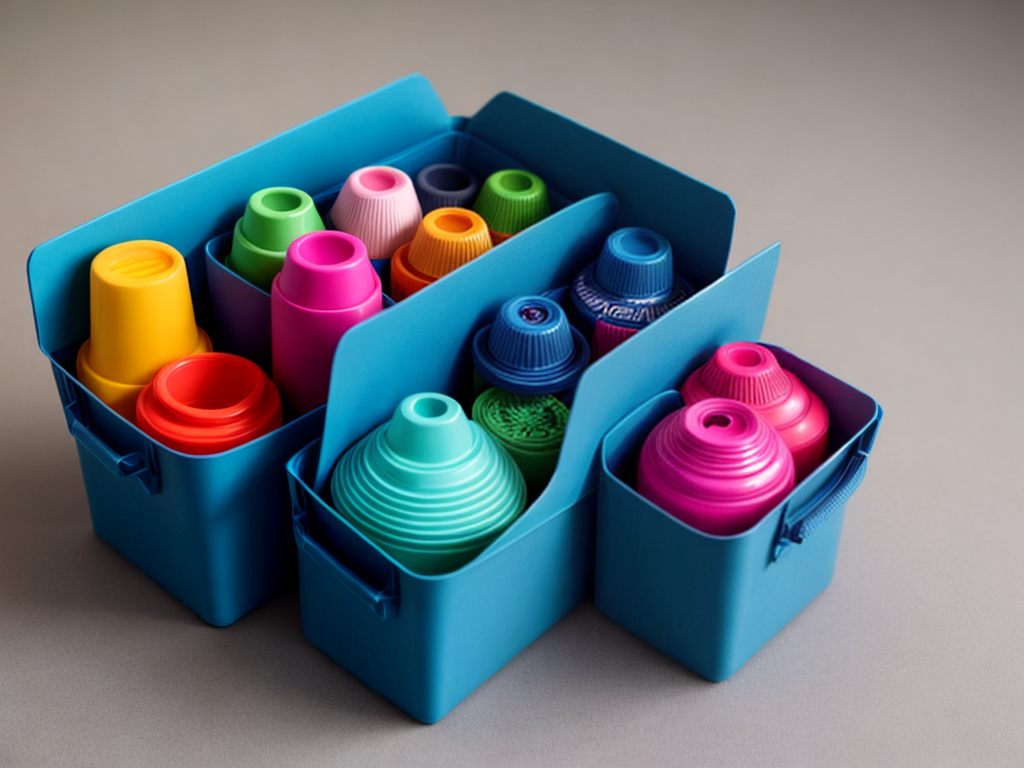
Did you know that 80% of people struggle with storage space in their homes? If you’re one of them, then collapsible containers might be the solution you’ve been looking for. These innovative storage solutions offer the convenience of compact storage without sacrificing functionality. In this article, we will explore the benefits of collapsible containers, the different types available, and how to choose the right one for your needs. Stay tuned for some helpful tips on organizing your space, folding and storing the containers, and even some creative uses for them. Don’t miss out on the opportunity to maximize your storage space and declutter your home.
Benefits of Collapsible Containers
There are several benefits to using collapsible containers, making them a practical choice for efficient storage. When compared to traditional storage options, collapsible containers offer a range of advantages. Firstly, their collapsible nature allows for easy and space-saving storage when not in use. This feature is particularly beneficial for those with limited storage space, as it helps maximize available room. Additionally, collapsible containers are lightweight and portable, making them convenient to transport. Whether you are moving, traveling, or simply need to transport items, collapsible containers offer a practical solution. Moreover, these containers are versatile and can be used in various settings, such as homes, offices, and warehouses. They are designed to be durable and sturdy, ensuring the safety and protection of stored items. However, it is important to consider the drawbacks as well. Collapsible containers may not be suitable for storing heavy or fragile items, as they may not provide the same level of protection as traditional storage options. In conclusion, the benefits of collapsible containers, including space-saving storage, portability, and versatility, make them an excellent choice for efficient storage needs.
Types of Collapsible Containers
When it comes to collapsible containers, there are several important points to consider. First, the material options available offer a range of durability and flexibility for different storage needs. Second, size variations allow for customization and efficient use of space. Lastly, the easy storage solutions provided by collapsible containers make them a practical choice for those looking to maximize their storage capabilities.
Material Options
One option for the material used in collapsible containers is durable and lightweight plastic. Plastic containers are popular due to their versatility and affordability. Here are four types of plastic commonly used for collapsible containers:
- Polypropylene (PP): This material is known for its high strength and resistance to chemicals, making it suitable for long-term use. It can withstand folding techniques without losing its shape.
- High-Density Polyethylene (HDPE): HDPE is a strong and rigid plastic that offers excellent durability factors, such as resistance to impact and moisture. It is commonly used for heavy-duty collapsible containers.
- Polyethylene Terephthalate (PET): PET containers are lightweight and have good clarity, making them ideal for storing food and beverages. PET is also recyclable, making it an eco-friendly option.
- Polyvinyl Chloride (PVC): PVC is a flexible and durable plastic that can withstand folding and bending. It is commonly used for collapsible containers that need to be compact when not in use.
These materials provide a range of options for collapsible containers, allowing users to choose the most suitable material based on their specific needs.
Size Variations
Size variations of collapsible containers offer a range of options to accommodate different storage needs. These containers are designed with a focus on compactness and space-saving options, making them ideal for those who desire efficient storage solutions. Whether you need to store small items or bulky objects, there is a size variation available to fit your requirements. From small collapsible containers that can be easily tucked away in a closet or under a bed, to larger containers that can hold a significant amount of items, these options provide flexibility and convenience. The compact design of these containers allows for easy storage when not in use, maximizing the available space in your home or office. With the variety of size options available, you can find the perfect collapsible container to suit your storage needs.
Easy Storage Solutions
For easy storage solutions, collapsible containers offer a versatile and efficient option. These space-saving solutions are perfect for those looking to declutter their living spaces. Here are four types of collapsible containers that can help you maximize your storage:
-
Foldable Bins: These containers are collapsible and can be easily folded flat when not in use, making them ideal for storing items such as clothes, toys, and household essentials.
-
Pop-up Hampers: These collapsible hampers are perfect for laundry rooms or bedrooms. They can be easily folded and stored away when not in use, saving valuable space.
-
Collapsible Storage Cubes: These versatile containers are great for organizing shelves, closets, or even under the bed. They can be collapsed when not needed, allowing for easy storage.
-
Folding Crates: These durable containers are perfect for storing heavier items such as books, tools, or groceries. They can be easily folded and stored away when not in use.
With these space-saving solutions, you can easily declutter your home and create a more organized living environment.
Choosing the Right Size and Material
When selecting the appropriate size and material for collapsible containers, it is crucial to consider various factors such as durability, storage space, and personal preferences. Collapsible containers offer numerous benefits, including their ability to save space when not in use and their versatility for creative storage solutions. These containers come in different sizes, ranging from small to large, allowing you to choose the one that best suits your needs. Smaller containers are ideal for organizing small items like office supplies or accessories, while larger ones can accommodate bulkier items such as clothing or sports equipment.
The material of the collapsible container is also an important consideration. Common materials include plastic, fabric, and metal. Plastic containers are lightweight and easy to clean, making them suitable for storing food or other items that require hygienic conditions. Fabric containers are soft and flexible, allowing them to fit into tight spaces and protect delicate items. Metal containers are durable and resistant to damage, making them suitable for storing heavy objects or for outdoor use.
Ultimately, the size and material of the collapsible container depend on your specific needs and preferences. By carefully considering these factors, you can choose the right container to effectively organize your space while maximizing durability and functionality.
Organizing Your Space With Collapsible Containers
To effectively utilize collapsible containers in organizing your space, consider the specific needs and preferences of your storage requirements. Collapsible containers offer several benefits that make them a valuable tool for organizing your space. Here are four tips for properly folding and storing collapsible containers:
-
Maximize space: Collapsible containers are designed to be compact when not in use, allowing you to save valuable space in your home or office. When organizing your space, consider the dimensions of the containers and how they can be stacked or nested to maximize storage efficiency.
-
Labeling: To easily locate items in your collapsible containers, use labels. Whether you prefer handwritten labels or printable ones, clearly identifying the contents of each container will save you time and effort when searching for specific items.
-
Categorize and group: Sort your belongings into categories and group them accordingly in the collapsible containers. This will not only help you maintain an organized space but also make it easier to find what you need when you need it.
-
Regular maintenance: Regularly check your collapsible containers for any damage or wear and tear. If any container is no longer in usable condition, replace it to ensure the integrity of your storage system.
Tips for Properly Folding and Storing Collapsible Containers
I have found that properly folding and storing collapsible containers is essential for maintaining an organized space. When it comes to folding techniques, it is important to follow the instructions provided by the manufacturer. Typically, collapsible containers are designed to fold in specific ways to maximize storage efficiency. Pay attention to any Velcro or snap closures that need to be secured before folding. This will prevent the container from unfolding during storage. Additionally, it is helpful to use storage hacks to make the most of your space. For example, you can stack the folded containers vertically to save floor space or utilize storage bins and shelves to keep them neatly organized. Labeling the containers can also be a useful storage hack, allowing you to easily identify their contents without having to unfold and search through each one. By mastering these folding techniques and incorporating these storage hacks, you can optimize your use of collapsible containers and maintain an organized and clutter-free space.
Creative Uses for Collapsible Containers
One way to take advantage of collapsible containers is by exploring their creative uses. These versatile storage solutions can be repurposed in unique and innovative ways, allowing you to not only save space but also add a touch of creativity to your living environment. Here are four ideas to inspire your own DIY projects with collapsible containers:
-
Hanging Herb Garden: Transform a collapsible container into a vertical garden by attaching it to a wall or fence. Plant your favorite herbs inside and enjoy fresh flavors right at your fingertips.
-
Toy Storage Solution: Use collapsible containers to organize your children’s toys. Label each container with different categories, such as dolls, cars, or building blocks, for easy access and cleanup.
-
Portable Pet Bed: Create a cozy bed for your furry friend by lining a collapsible container with a soft cushion or blanket. Its collapsible design makes it easy to transport, perfect for trips or outdoor adventures.
-
Office Supplies Organizer: Turn a collapsible container into a stylish and functional organizer for your desk. Use different compartments to store pens, paper clips, and other essentials, keeping your workspace tidy and efficient.
Maintenance and Cleaning Tips for Collapsible Containers
When it comes to maintaining collapsible containers, there are a few key points to keep in mind. First, proper storage techniques are essential to ensure the longevity of the containers. Second, using the right cleaning materials and methods is important to keep them clean and free from dirt and grime. Lastly, taking steps to prevent mold and mildew is crucial in order to maintain the overall quality and functionality of the containers.
Proper Storage Techniques
To properly store collapsible containers, it is recommended to follow maintenance and cleaning tips to ensure their longevity and functionality. Here are some key techniques to help with storage organization and space-saving:
-
Collapse containers fully: Before storing, make sure to collapse the containers fully to maximize space.
-
Stack containers vertically: When storing multiple containers, stack them vertically to save space and improve accessibility.
-
Utilize storage bins or shelves: Consider using storage bins or shelves specifically designed for collapsible containers to keep them organized and easily accessible.
-
Label containers: To easily identify the contents of each container, label them with clear and concise descriptions.
Cleaning Materials and Methods
Maintaining the cleanliness of collapsible containers is essential for their durability and functionality. Proper cleaning materials and methods not only ensure the longevity of these containers but also promote hygiene and safety. When it comes to cleaning supplies, it is important to choose eco-friendly alternatives that are both effective and environmentally conscious. Here is a table outlining some recommended cleaning materials and methods for collapsible containers:
| Cleaning Materials | Cleaning Methods | Eco-Friendly Alternatives |
|---|---|---|
| Mild dish soap | Warm water | Vinegar solution |
| Microfiber cloth | Soft brush | Baking soda |
| White vinegar | Gentle scrubbing | Lemon juice |
Preventing Mold and Mildew
Preventing mold and mildew in collapsible containers requires regular cleaning and proper storage techniques. To ensure that your containers remain mold-free, follow these maintenance and cleaning tips:
- Keep containers dry: Before storing, make sure the containers are completely dry to prevent moisture buildup.
- Clean with mild detergent: Regularly clean the containers with a mild detergent and warm water solution to remove any dirt or residue.
- Thoroughly dry after cleaning: After washing, allow the containers to air dry completely before folding and storing them.
- Store in a cool, dry place: Choose an area with low humidity and good air circulation for effective storage solutions.
Conclusion
In conclusion, collapsible containers offer numerous benefits for compact storage. By choosing the right size and material, organizing your space becomes easier and more efficient. Properly folding and storing collapsible containers ensures they remain in good condition. Additionally, their versatility allows for creative uses beyond storage. By following maintenance and cleaning tips, collapsible containers can be kept in optimal condition for long-term use. Overall, collapsible containers are a practical solution for maximizing storage space.

